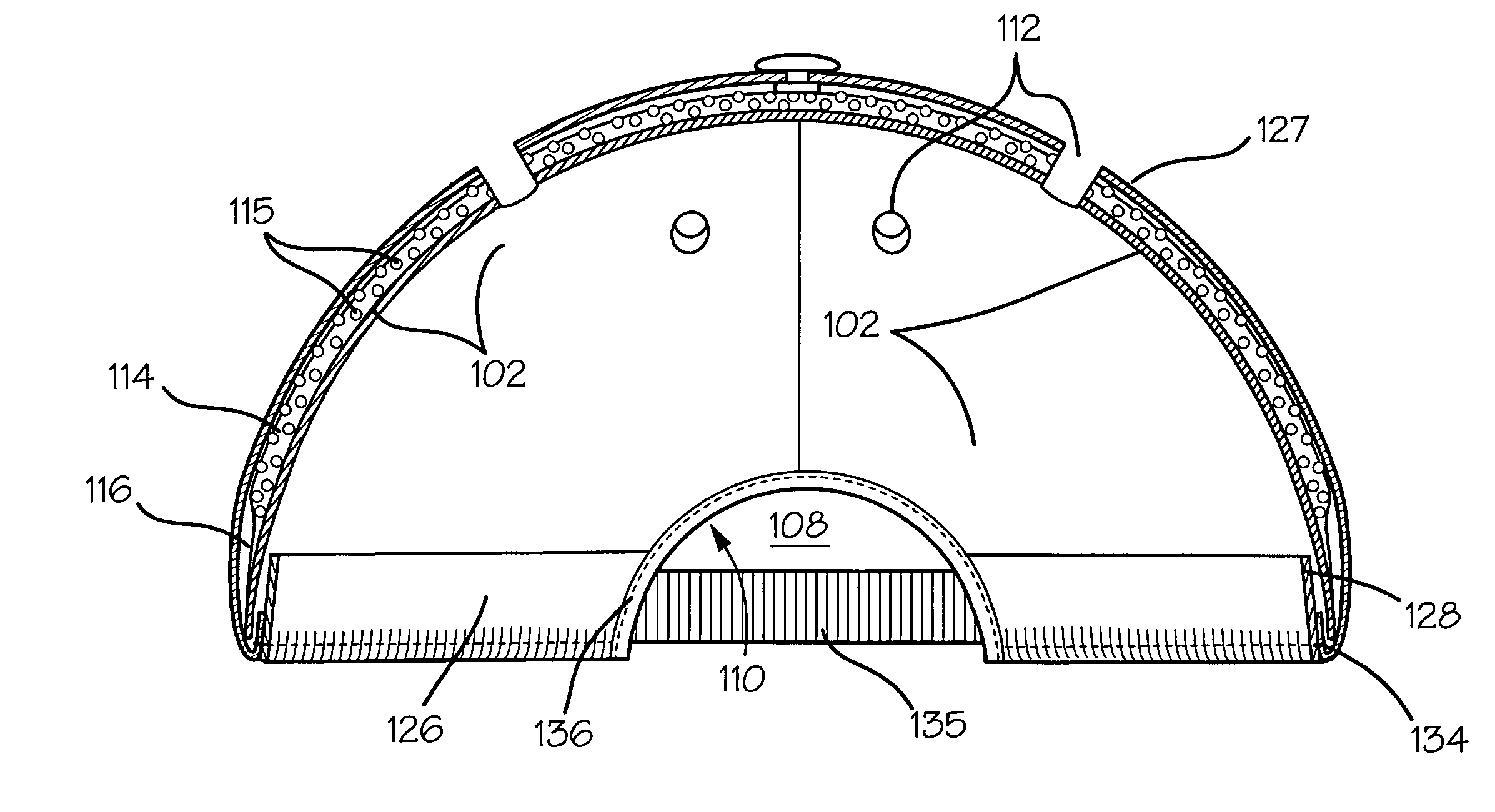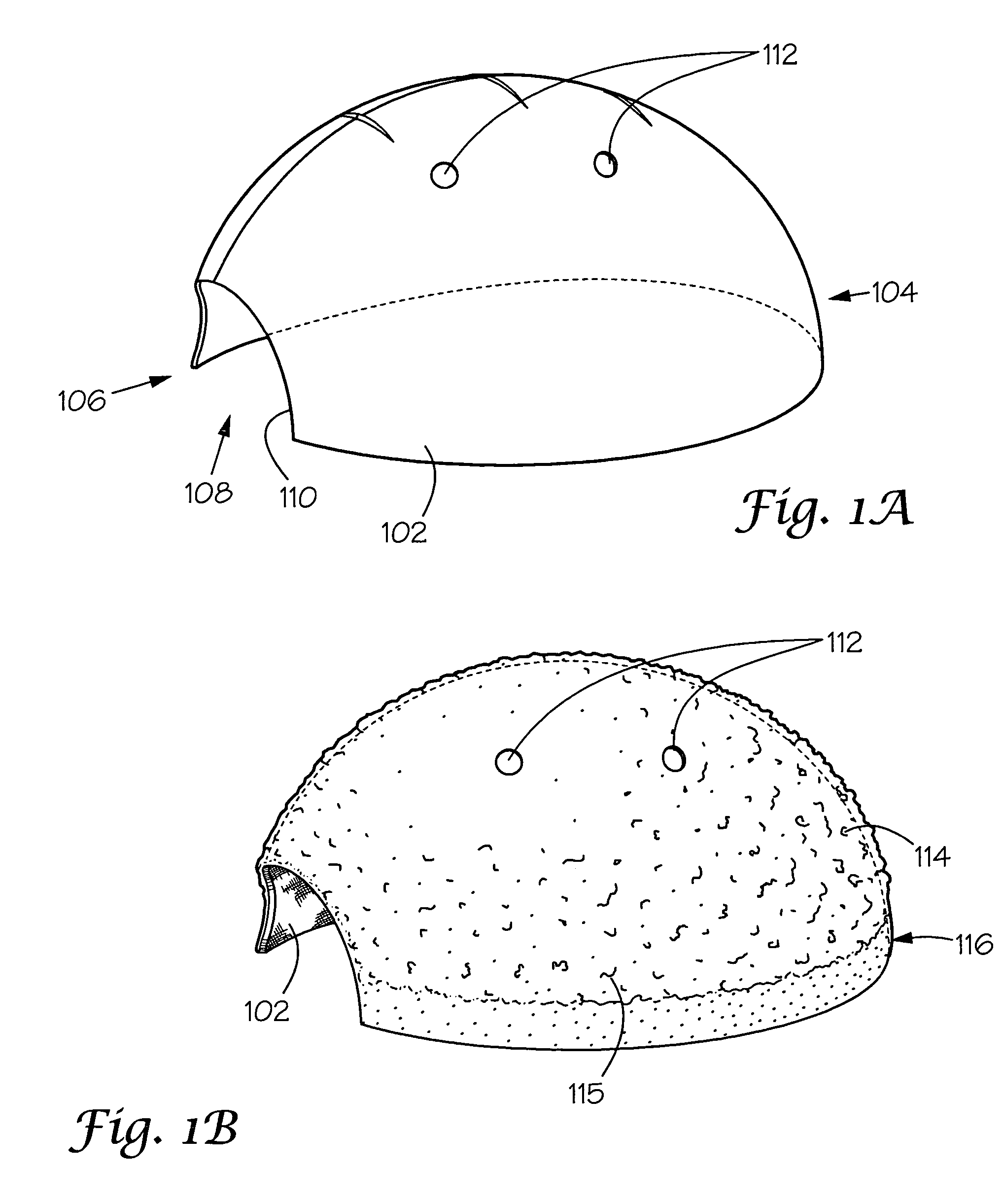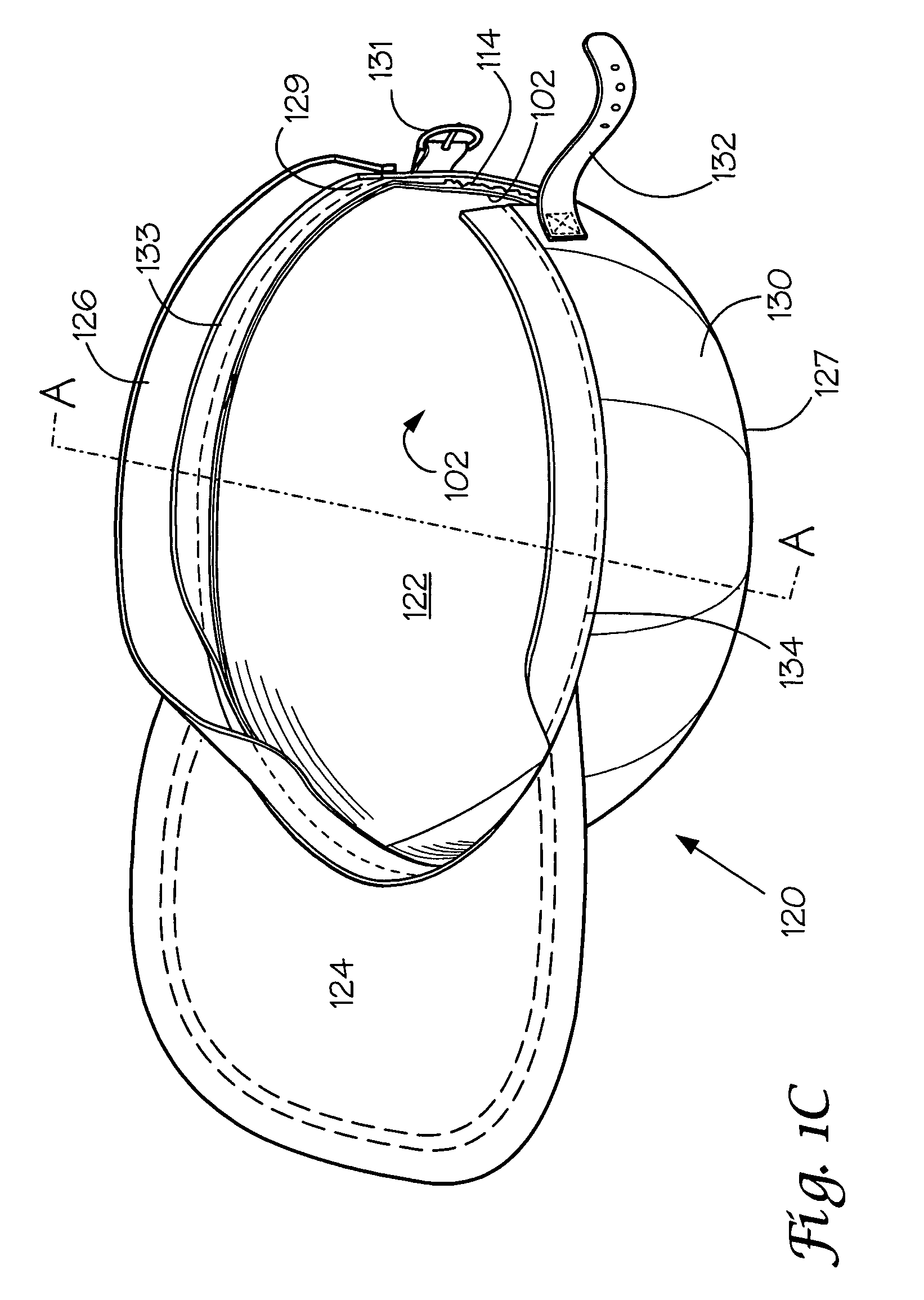Weight-bearing headwear, components thereof, and methods of use
a technology of headwear and components, applied in the field of headwear, can solve the problems of unobtrusive wearing of such headwear for exercise purposes, and achieve the effects of improving posture, enhancing the effect of exercise, and increasing the development of bone mineral density
- Summary
- Abstract
- Description
- Claims
- Application Information
AI Technical Summary
Benefits of technology
Problems solved by technology
Method used
Image
Examples
example 1
[0093]A pilot exercise study using headwear of the present invention was conducted with three adult volunteers, a 53 year-old male (subject A), a 55 year-old female (subject B), and a 53 year-old female (subject C). Baseline and post-study bone mineral density (“BMD”) analyses were taken with the same machine using quantitative computed tomography (“QCT”). Each of the volunteers wore a weighted cap of the present invention and kept a log recording their respective minutes walked, distance traveled, and observations. All subjects continued with their existing habits of taking supplemental calcium (1–2 grams / day) and Vitamin D (400 IU / day).
[0094]The weighted layer of each hat used by each volunteer weighed about 700 grams, and each hat weighed about 800 grams in total. The goal of the study was to add an exercise walk 3–4 times per week for 40–60 minutes per walk. The study period spanned from the baseline to the post-study BMD determinations, which were 141 days (˜0.4 years, or 3 mon...
example 2
[0100]A walking exercise trial with control groups evaluates the effects of adding a weighted hat according to the present invention to activities of postmenopausal women. Initial bone mineral density determinations are made prior to initiation of the trial. Control and treatment groups include: non-regimented exercise control (allowed to do standard activities, but not participating in the regimented and monitored exercise); regimented exercise control (walking for 30–60 minutes three times per week (“regimented walking”), with no weighted hat); regimented walking with 100 g weight hat; regimented walking with 200 g weight hat; regimented walking with 300 g weight hat; regimented walking with 400 g weight hat; regimented walking with 500 g weight hat; and regimented walking with 1,000 g weight hat. Lighter weight individuals are provided with lighter weight hats disproportionately to encourage compliance and completion of the trial.
[0101]After a six-month period of study, observati...
example 3
[0102]The effect of use of wearing a weighted hat according to the present invention during an aerobic exercise regime is determined. Volunteers are solicited, evaluated, and selected who participate in a standard aerobics class of medium intensity. Initial bone mineral density determinations are made prior to initiation of the trial. Control and treatment groups include: aerobic exercise control (participate in aerobics class 2–4 times per week, with no weighted hat); same aerobics class wearing a 100 g weight hat; same aerobics class wearing a 200 g weight hat; same aerobics class wearing a 300 g weight hat; and same aerobics class wearing a 400 g weight hat. Lighter weight individuals are provided with lighter weight hats disproportionately to encourage compliance and completion of the trial. Results take into account the attendance frequency by each participant. All participants are encouraged to exercise in the class at least twice per week. Participants agree that this exercis...
PUM
 Login to View More
Login to View More Abstract
Description
Claims
Application Information
 Login to View More
Login to View More - R&D
- Intellectual Property
- Life Sciences
- Materials
- Tech Scout
- Unparalleled Data Quality
- Higher Quality Content
- 60% Fewer Hallucinations
Browse by: Latest US Patents, China's latest patents, Technical Efficacy Thesaurus, Application Domain, Technology Topic, Popular Technical Reports.
© 2025 PatSnap. All rights reserved.Legal|Privacy policy|Modern Slavery Act Transparency Statement|Sitemap|About US| Contact US: help@patsnap.com



